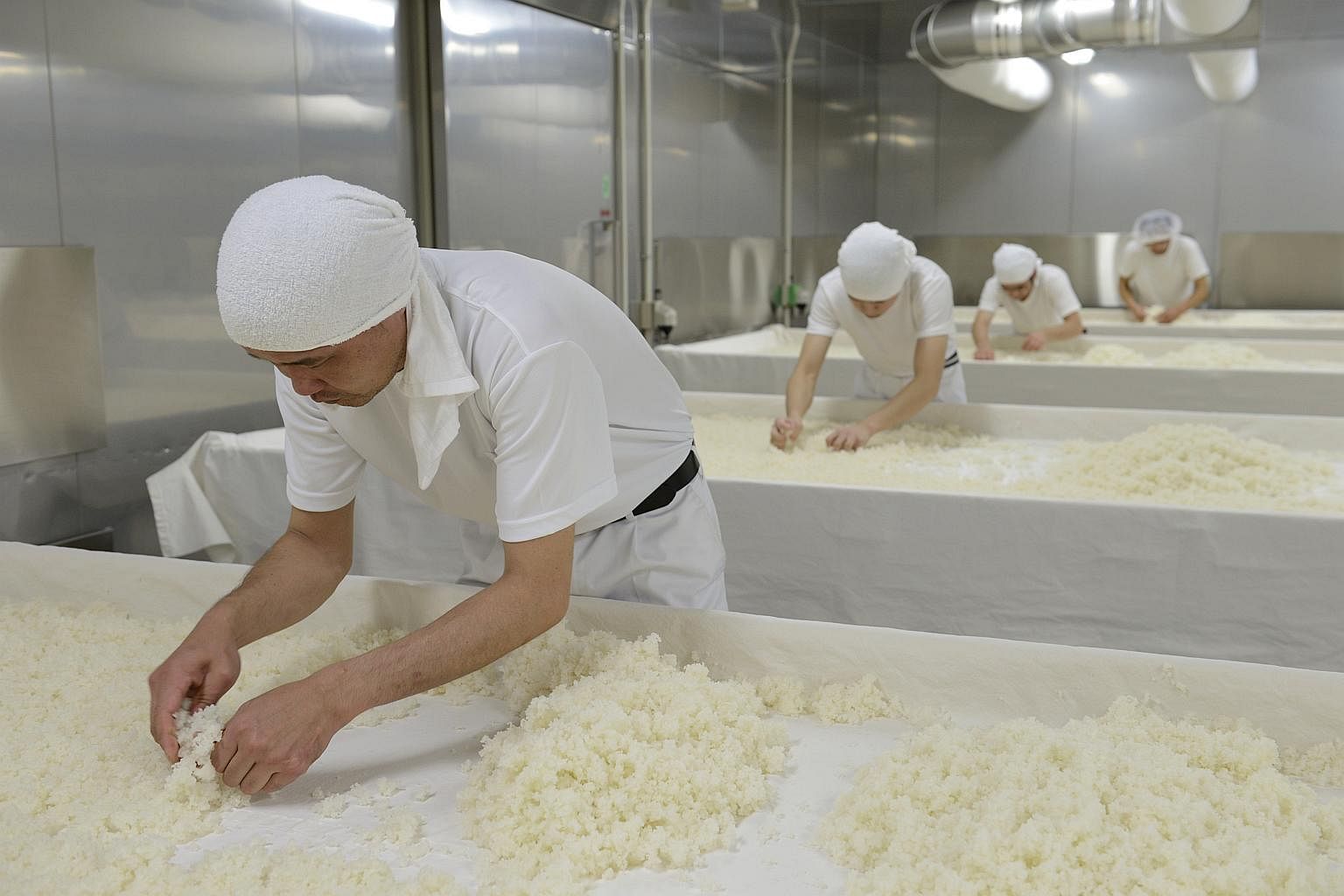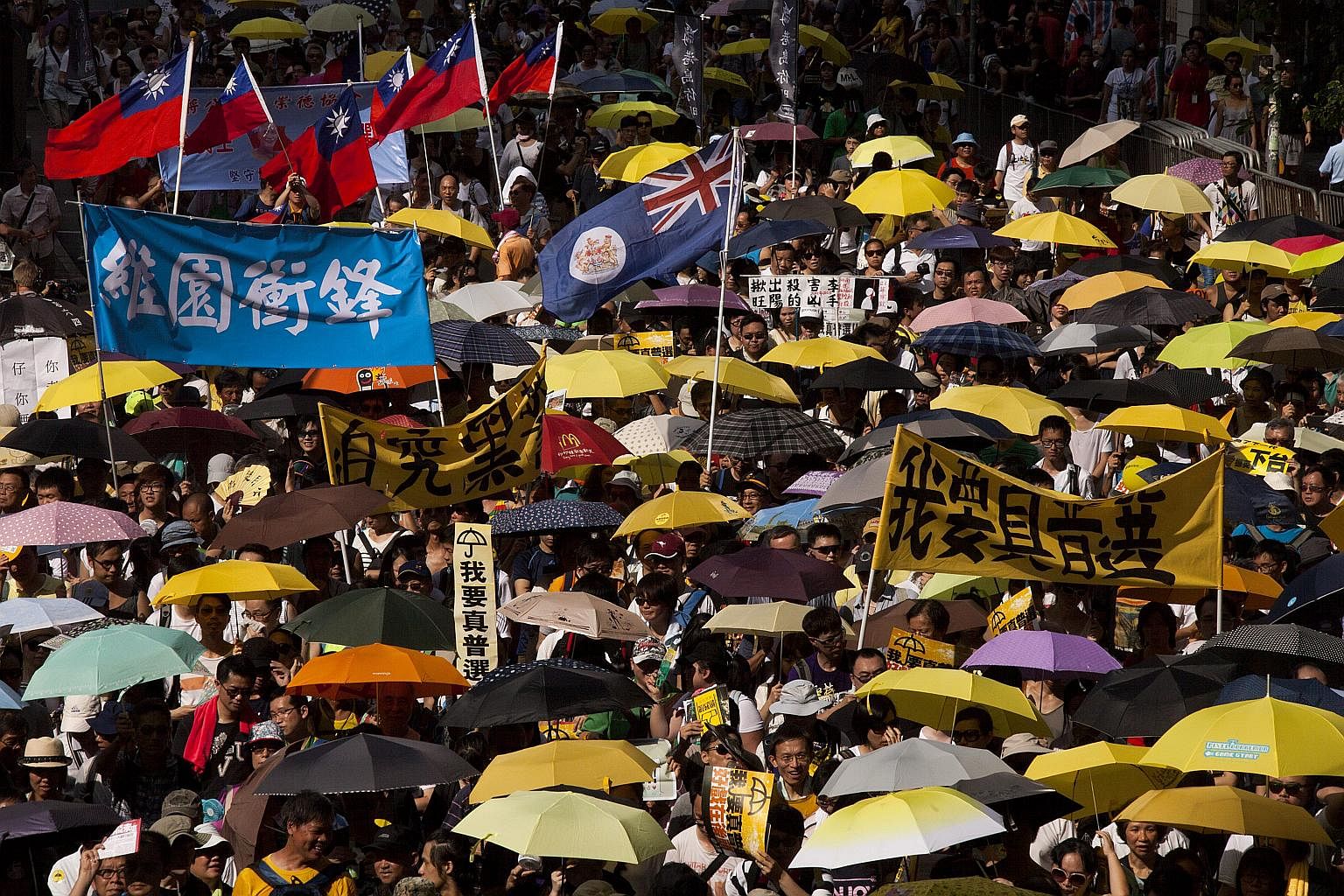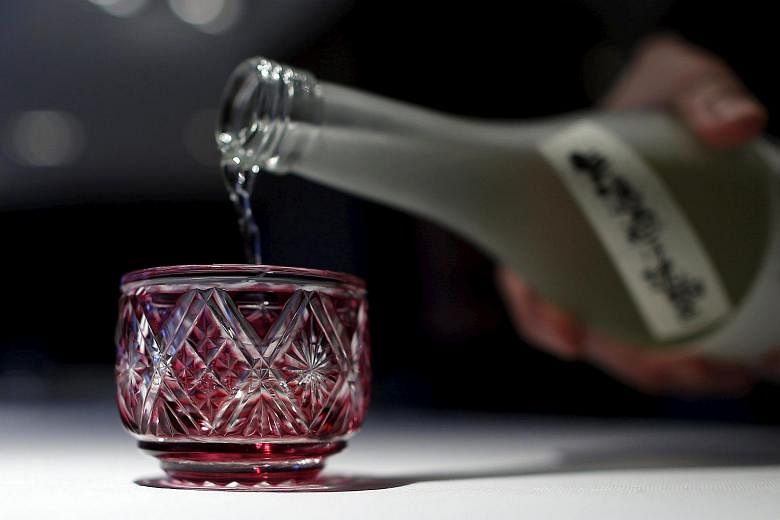1. New marking system should improve Japanese sake's brand strength
The Yomiuri Shimbun/ANN

The National Tax Agency has decided to have only refined sake produced in Japan using domestically grown rice indicated as "Nihonshu" (Japanese sake), as part of the government's "Cool Japan" strategy of promoting Japanese products abroad.
In autumn, the agency will amend the indication criteria of sake on the basis of a law concerning liquor business associations. With the amendment, it will designate Japanese sake based on rules protecting geographical indications, with the product labeled with the appellation of origin, starting this year.
Geographical indications is a system for the government to guarantee the quality of those liquors or farm products as ones produced in a particular region and meeting certain qualifications. The European Union was the first region in the world to introduce the system.
Under a World Trade Organization accord, geographical indications are defined as an intellectual property right that each member country must protect. Should geographical names be used fraudulently overseas, a country can call on other countries to take measures against domestic producers in those countries.
Typical examples of products whose brand strength has been enhanced with geographical indications are Bordeaux wine produced in the Bordeaux region of France and Scotch whisky made in Scotland.
With the upcoming designation, sake produced using foreign-grown rice or sake produced abroad can no longer be called "Nihonshu" or "Japanese sake."
Thanks to the growing popularity of washoku Japanese cuisine abroad, the export volume of Japanese sake has risen sharply in recent years, with exports totaling a record ¥11.5 billion in 2014, a 2.6-fold increase from 10 years before.
Due to this popularity, it is possible counterfeit sake will come onto the market. We can understand the agency's aim of protecting the brand value of Japanese sake to forestall this development.
However, labeling designations on the basis of a domestic law do not mean they would be applied immediately abroad. It is necessary for Japan to negotiate separately with those countries that have introduced the geographical indications system, and define which products are to be reciprocally protected.
Depending on where it is produced, Japanese sake has a variety of local brands that differ in taste. How the attraction of Japanese sake as a whole can be conveyed to consumers overseas and how it can be marketed there is open to question.
The spreading idea, even in Japan, that a geographical name is a property is aimed at putting a stop to the rampant production of foods overseas that are falsely labeled "Made in Japan."
Annual surveys conducted in other Asian countries by the Agriculture, Forestry and Fisheries Ministry have found a number of falsely labeled food products, including "Yubari melon," which was fraudulently claimed to have been produced in Yubari, Hokkaido.
In China, there has been one case after another of arbitrarily registering trademarks using Japanese geographical names. These actions could affect the image of Japanese products, which are known for their good quality.
The farm ministry last month began a system of having farm products designated for geographical indications labeled with the "GI (geographical indication) mark."
How can Japan maintain the credibility of Japanese-made products and enhance their brand strength in overseas markets? The government, in cooperation with organizations concerned, must rack its brains to work out an appropriate strategy.
2. Hong Kong's largest party cannot be complacent
China Daily/ANN

From humble beginnings on July 10, 1992, when it was established by 56 founding members, the party has achieved astonishing development over the past two decades.
It now boasts a roster of over 28,000 members.
With 13 seats in the Legislative Council, it is now the largest political party in the special administrative region.
These are clearly marvelous achievements for the DAB, considering that the party suffered numerous defeats in elections in its early days, and was mocked as a "frequent election loser".
But what is more worthy of celebration for the DAB is that it has played an important role in helping ensure the effective and lawful administration of the SAR government as well as the smooth implementation of the "One Country, Two Systems" policy in Hong Kong during this time.
Since China resumed the exercise of sovereignty over Hong Kong in July 1997, the DAB has been the major force backing the SAR government in all of its endeavors, particularly in securing legislative approval for its policies.
To promote their own political aspirations, radical opposition lawmakers in the city have been indulging in filibustering tactics in the LegCo.
They have relentlessly tried to block many government-sponsored bills with delaying tactics in their attempt to force through their demands.
As the biggest pro-establishment party, the DAB has been instrumental in coordinating efforts to overcome filibusters, ensuring the timely passage of bills and the effective implementation of policies.
The DAB can also take pride in its considerable influence in the community. Thanks to its 132 seats in the district councils, as well as its wide network of party members across the city, the party has been helpful in promoting government policies in the community and facilitating better understanding and wider acceptance of these policies.
For all its achievements and contributions, however, the DAB cannot afford to be complacent. It has a long way to go in continuing with the role it has been successfully playing. It is hoped that the party will grow bigger, better and stronger for the sake of the betterment of Hong Kong.
3. Don't neglect Islamabad's history
Dawn of Pakistan/ANN

Either the state has been neglectful in preserving historical treasures, or it has looked the other way as artefacts have been smuggled out or sold for profit.
An example of this official carelessness was highlighted in a report published in this paper on Sunday: priceless historical relics in Karachi belonging to the Moenjodaro and Mehrgarh periods may be facing the risk of theft as well as damage due to improper handling by the authorities concerned.
The artefacts are being transported from private premises to the National Museum of Pakistan in the metropolis.
However, the manner in which they are being packed and transported seems to be highly unprofessional.
Though Sindh Archaeology Department officials say the shifting is being overseen by qualified technical staff, professional archaeologists told this paper they had serious reservations about the way the objects were being handled.
Moreover, they point out that the archaeology officials are not properly keeping track of what is being shifted, which means the objects - some of which date back millennia - can be 'disappeared'.
A photograph published with the news report clearly shows the artefacts casually placed in boxes, as if they were regular objects of little worth.
This is not the first time ad hoc measures have been applied when dealing with antiquities; in the past there have been reports of similar non-professional methods used to deal with the objects kept in the Taxila museum.
With the provinces now firmly in charge of the cultural sphere, they must address these inadequate methods of dealing with our history. In the present case, since the relics had to be moved, experts should have been consulted in order to package and transport them in a professional manner.
Instead of applying the usual unfeeling bureaucratic touch, perhaps students with a passion for history and culture could have been engaged to help shift the objects with due care.
There is still time to bring in professionals in order to properly shift, list and transport the objects, which are about 35,000 in number, if the Sindh authorities so desire.
Looking at the bigger picture, officialdom needs to reconsider its attitude towards handling history for unless things change, very soon there may be very few artefacts left to display.
This uncaring and apathetic approach towards dealing with our rich history requires an urgent reset.

